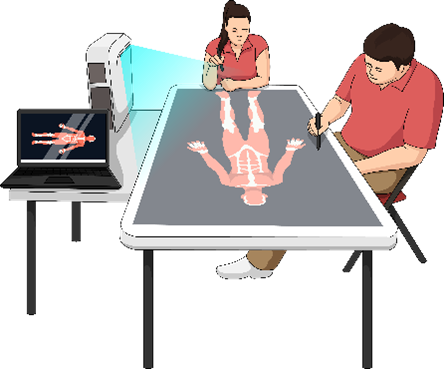- NIU HEALS
- Education
NIU HEALS Education
NIU Health Care Education Alliance for Learning and Scholarship (NIU HEALS) emboldens students and faculty to facilitate transformative educational techniques. We have successfully implemented a variety of teaching techniques in health care disciplines and are excited to continue to collaborate on more.
Transformative Educational Techniques
Creative Medical Investigation
The creative medical investigation, otherwise known as CMI, is an application of the Case-by-Collaboration model. Students come together to solve a case study. However, this case study contains a creative storyline with character development, creative narrative and problem-based learning. Students are then provided opportunities to practice their hard and soft skill sets based on the demands of the case. Finally, students must produce artifacts to show the development of the hard and soft skill sets. The CMI is unique in that it was established specifically to facilitate the development of soft skills in students focused on health care. We created an open-access website for any educator who wishes to utilize the CMIs we created and provided instructions on how to create their own.
Wood TA, Grahovec NE, Hill CM, Sanfilippo CM, Blessing E. A creative medical investigation: Bridging the soft skill gap. International Journal of Kinesiology in Higher Education. 2022;1-12.
Blessing E, Wood TA, Grahovec NE. Case-by-collaboration: An adaptable skills-based educational model for health discipline. The Internet Journal of Applied Health Sciences and Practice. 2022;20(4):12.
Implementing An Interactive Projector to Enhance Functional Anatomy learning
Anatomy education is an important component of any student focused on health care. Students who focus on health care must integrate their anatomical knowledge with their knowledge of medical conditions to effectively recognize and treat those conditions to improve patient outcomes. Unfortunately, anatomical education may only include low-fidelity textbooks and stock images or cost-prohibitive cadaver dissections, which could limit the effectiveness of anatomical knowledge in the didactic setting, depending on the resources available to the program. To overcome these limitations, this educational technique implemented the use of an ultra-short throw projector, which projected a life-sized anatomical model that students were able to dissect. This educational technique is cost-effective and provides high-fidelity anatomical models which enhanced the students’ functional anatomy education.
